
Gardeneers: Community Gardens in Chicago
Community gardening has become a topic of interest in recent years. As more people look for sustainable ways to grow fresh food and productive ways to use outdoor spaces, more community gardening organizations have taken root, especially in schools. PED recently had the chance to get to know more about one of these nonprofits.
Ask Adam Zmick, co-founder of the community gardening organization Gardeneers, about his favorite memory from his work, and he'll sit quietly for a few seconds. "There's just so many," he'll say.
But then he'll tell you about the raspberry patch.
"We have a little raspberry patch, and it gets pretty big, even in the summer," Zmick said in a recent interview. "Right around mid-July, you can sit in there, picking raspberries, just sitting, kind of talking. You know, [if] we're going to have them for our farmstand, it's one of those 'one for you, one for me' kind of deals... And you just have a conversation and be out in nature."
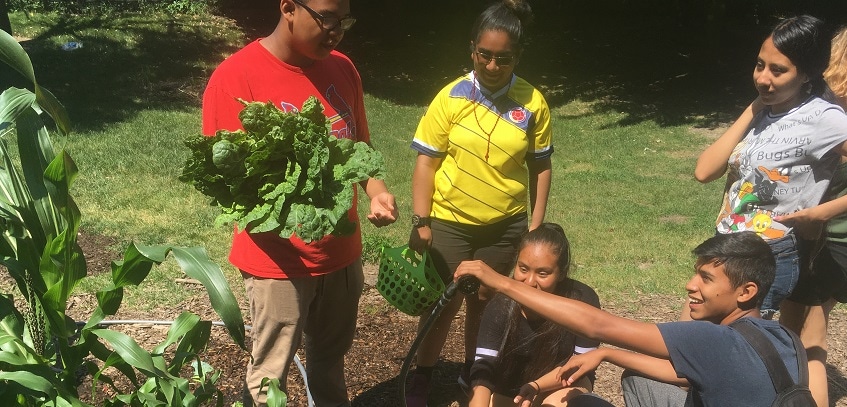
Having a conversation and being out in nature might seem like simple pleasures, but they can mean the world to the students, volunteers, and staff who work at the Gardeneers' urban farming sites. And they're far from the only benefits the program offers.
Founded in 2013, Gardeneers is a Chicago-based nonprofit with the mission of establishing and providing continuing support for school gardens throughout low-income neighborhoods in the area. With the help of volunteers and program staff, students at participating schools plant, grow, and harvest their own crops; at the high-school level, they also learn the business side of selling the produce.
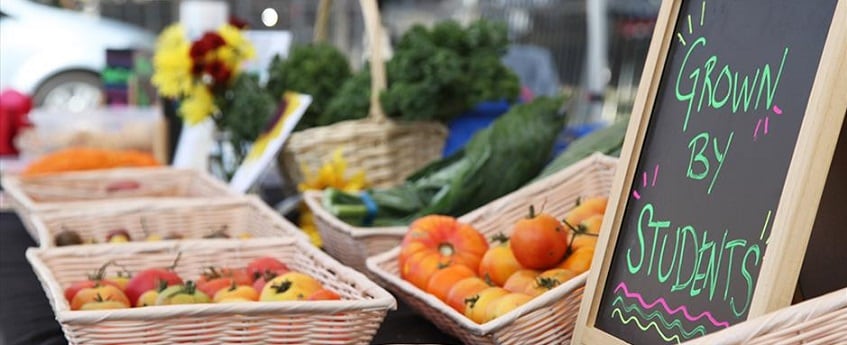
The need is great. Search the Internet, and you'll find all sorts of statistics that explain why Gardeneers' mission is vital:
- About 17.3 million people in the U.S. live more than 1/2 mile (in an urban area) or 20 miles (in a rural area) from a grocery supermarket1
- Children ages 10 to 16 spend less than 13 minutes each day engaged in "vigorous outdoor activity" and spend half the amount of time playing outdoors as their parents did2
- Over 34 percent of children in Illinois are considered overweight or obese3
Recently, PED supported Gardeneers with a donation of a Shindaiwa string trimmer and leaf blower and learned more about how these tools empower Chicago-area students to get outside, grow their own food, and ultimately enjoy a happier, healthier lifestyle.
Teaching Gardening in Schools
"The first school was Oglesby Elementary, where we're still at," Zmick said.
Since starting at Oglesby in 2013, Gardeneers has expanded to 20 schools across 13 Chicago neighborhoods. Currently, the program is set up so that elementary school students spend time in their schools' gardens once per week, and high school students work in their gardens three times per week. For high schoolers, the program is run in conjunction with After School Matters.
"[After School Matters] is a program in which teens actually get paid to participate," Zmick said. "They're learning both the hard skills of the program they're in, so ours is gardening... as well as soft skills like how to work together in a group, what to do if you're running late to work... how to get along with someone you might not agree with on your team, those kinds of things.
"For a lot of kids, it's their first paid job, essentially," said Zmick.
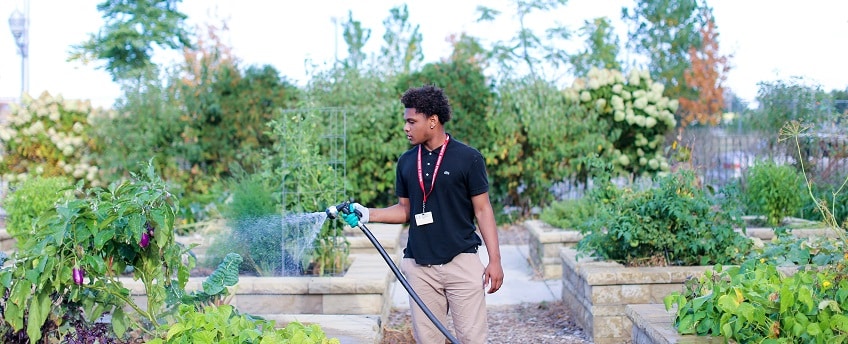
Without the partnership with After School Matters, Gardeneers would have a hard time offering all the benefits of a paid work experience. Similarly, like most nonprofits, Gardeneers relies on partnerships with volunteers to realize its goals-and there are a lot of volunteers eager to help.
"We'll work with more than 2000 volunteers this year for our volunteer day," Zmick declared.
Although some volunteers work regular schedules at their sites, according to Zmick the "overwhelming majority" of volunteers are one-timers who come as individuals or with a work or social group to do some yard work or office work.
Zmick is grateful for their contributions. He explained that the volunteers take care of the harder yard work "so that the kids can focus on the educational component" of the program.
When difficult yard work is involved, that's where power equipment comes in.
Tools for Growing a Healthier Community
"We have a fleet of weed wackers that are always being used... during the season when the grass is growing tall," Zmick said during the interview.
The Shindaiwa string trimmer and leaf blower that PED donated are just two tools in the Gardeneers' fleet. Other pieces of power equipment at their disposal include lawn mowers, a tiller, and a chainsaw.
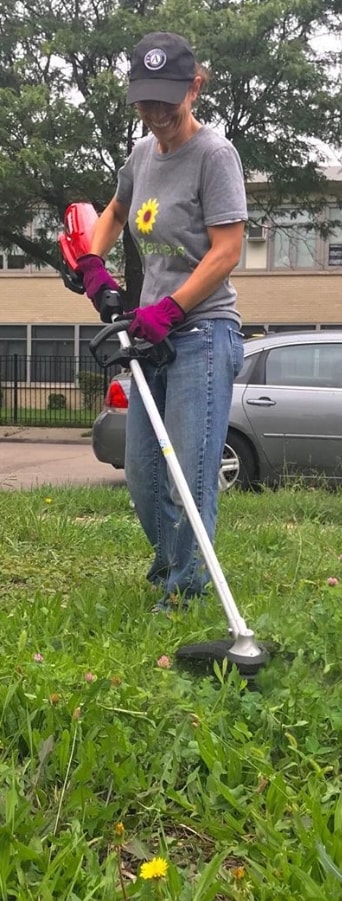 But the string trimmers are by far the most popular tools. "Most everyone feels comfortable with the weed wacker," Zmick said, "and most every site needs it."
But the string trimmers are by far the most popular tools. "Most everyone feels comfortable with the weed wacker," Zmick said, "and most every site needs it."
Although it's most often the volunteers using the weed wackers to clear paths in the gardens and beat back overgrowth, they're not the only people doing so. High school students will use the trimmers along with other power tools, such as drills and circular saws to build structures and repair raised beds.
Zmick said that learning how to use such equipment safely, including using the recommended protective gear, is part of their training. For some, it's also fun. "It's kind of a relaxing thing," he explained. "Kids are allowed to put their headphones in, and hey, here's a long path, you've got to cut the weeds down. Here's your task, get to it."
Of course, it's not all fun and games. Using power tools at their school urban agriculture sites comes with challenges. "One, we actually use these tools a significant amount, so we actually go through them," Zmick said. Manual tools and equipment like pruning shears and gardening gloves suffer wear as well.
Another challenge is the demand for the tools-there's always a need. "Just this past Friday, people were like, 'Hey, where's the weed wacker?' You know, more people had taken them out than there were in the office. So the last person who showed up didn't get that."
Still, the organization has more equipment available to it now than when it began, and today some schools even have their own fleet of tools that remain on site. The benefits are enormous.
"If you're weed wacking compared to pulling out weeds by hand, it's just going to multiply your time by a whole lot. And other things, you literally cannot do without power tools," Zmick said. "That just helps us multiply the effort of our people."
The Benefits of School Gardens
For Zmick, one of the most exciting prospects for Gardeneers' future is "...getting out of startup mode into something that's more established and predictable and replicable."
Making the program replicable and easy to establish at more sites depends on several factors. The availability of power equipment is one factor. The more easily the Gardeneers' work can be done, the further the program can expand.
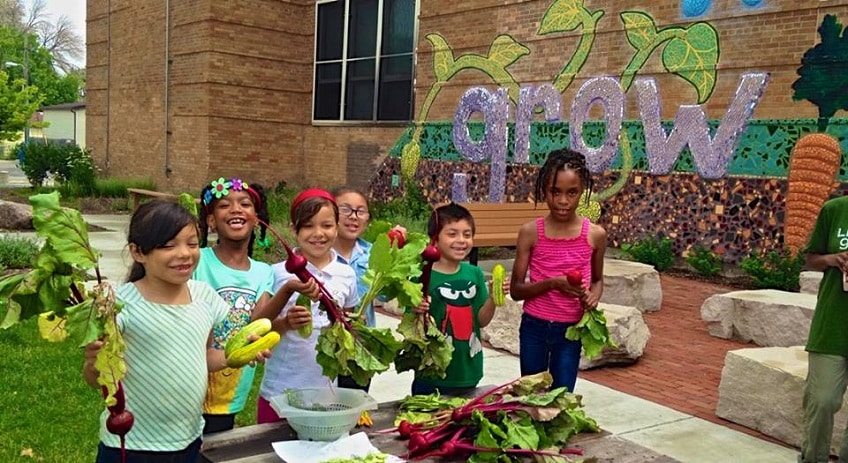
Already the spread of the Gardeneers program has had quantifiable results that Zmick was happy to share:
- 98 percent of students in the program demonstrated growth in social-emotional skills
- Participating students ate one additional serving of fruits and vegetables per week
- At the time of this interview, Gardeneers had grown 5381 pounds of food for the year, eclipsing their goal of 5000 pounds-and they were still harvesting
Additionally, 96 percent of students tried a new food as a result of being in the program. For some, that food might have been the raspberries from the summer garden patch. For others, it might have been zucchini, or a certain kind of tomato.
Whatever the crop, Zmick believes in all the ways that the Gardeneers program helps Chicago's students grow, and he hopes to make the program more sustainable and able to serve more communities. "The need is so great," he said. "This is something that every kid should get to be able to do."
![]()
NEXT: Shindaiwa: Legendary Performance

